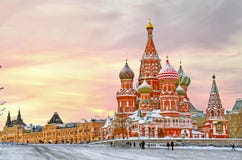Russia. Moscow. Arbat Street. Arbat Street Mainly Referred To As The Arbat, Is A Pedestrian Street About One Kilometer Long In The Historical Centre Of Moscow. The Arbat Has Existed Since At Least The 15Th Century, Thus Laying Claim To Being One Of The Oldest Surviving Streets Of The Russian Capital. It Forms The Heart Of The Arbat District Of Moscow. Originally The Street Formed Part Of An Important Trade Route And Was Home To A Large Number Of Craftsmen. In The 18Th Century, The Arbat Came To Be Regarded By The Russian Nobility As The Most Prestigious Living Area In Moscow. The Street Was Almost Completely Destroyed By The Great Fire During Napoleon`s Occupation Of Moscow In 1812 And Had To Be Rebuilt. In The 19Th And Early 20Th Centuries It Became Known As The A Place Where Petty Nobility, Artists, And Academics Lived. In The Soviet Period, It Was The Home Of Many High-Ranking Government Officials. Today The Street And Its Surroundings Are Undergoing Gentrification, And It Is Considered A Desirable Place To Live. Because Of The Many Historic Buildings, And The Numerous Artists Who Have Lived And Worked In The Street, The Arbat Is Also An Important Tourist Attraction.
ID 86034525 © Bladerunner7 | Megapixl.com
CATEGORIES
Your image is downloading.
Sharing is not just caring, it's also about giving credit - add this image to your page and give credit to the talented photographer who captured it.:





































